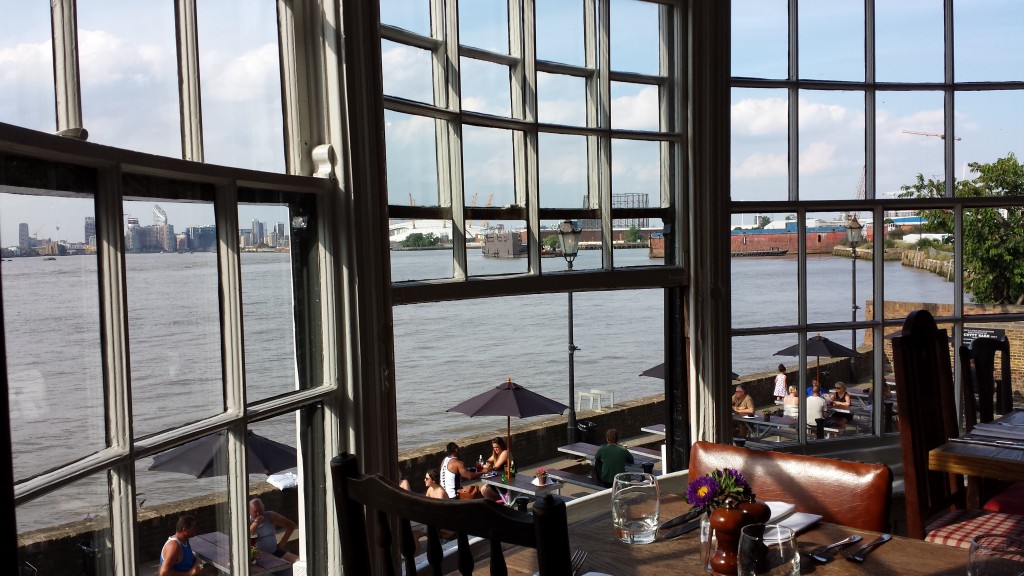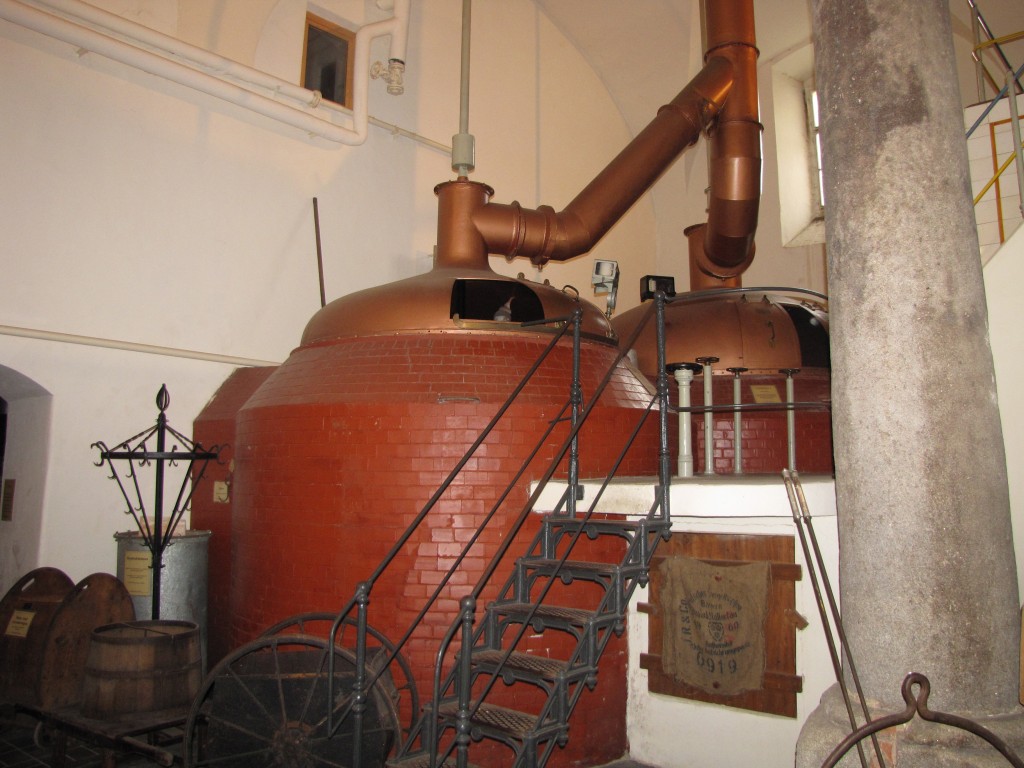Waiting anxiously for the Feb 4th post? It will appear in the afternoon today.
February 1, 2016. Post 1011. The past 30 years have seen twin trends simultaneously operating in Europe: new breweries and brew ventures growing like mushrooms and old traditional breweries dying like weeds. In the US the process was cleaner. In the 20th century our economy practiced brewericide and dropped the number of independent breweries from the thousands to a few dozen. From the ashes, the craft beer phoenix has blessed us with more choice than we’ve ever had.

It’s a long uphill hike, but Anhofer’s beer– and the view– are worth it.
We’ve continued to wonder why so many breweries in Europe close at a time when so many new ventures are succeeding. Some of the reasons are easily apparent. Breweries in small towns struggle while flashy brewpubs in big cities thrive. Small town brewers are sometimes slow to adjust to changing demand. Small regional breweries that own a handful of taverns are tempting targets for bigger fish trying to build bigger market share and gain more economies of scale. In Eastern Europe, small brewers who somehow managed to avoid collectivization under Communism never could produce products as clean and consistent as the big western conglomerates. If their brew was palatable, they could survive. Their only real competition was from large state owned breweries such as Żywiec, which is to say, not much competition at all. In the 1990s Heineken bought a controlling interest in Żywiec and poured in millions of Zlotys upgrading the facility to make beer as cleanly nondescript as its western products. Once successful brews like Swejka Pilsener and Królewskie Mocne disappeared.* The same process was going on throughout the east. Three of the independent breweries that encouraged us to include Leipzig as one of the top brewing cities in Europe were gone by the time we went to press.
Less morbidly, we’ve wondered why some breweries manage to buck the megamerger trend and continue to produce locally distinctive brews. We think there may be some lessons here for the new wave of brewers who want to be relevant when their grandchildren start drinking. On the other hand….if it were easy, everyone would brew it.
- Brew the best of a style in the region and stay with what you do best. Andorfer Weizenbierbrauerei has been around for nearly 100 years, filling a specific niche with a superior brew from a small brewery high on a hill overlooking Passau, Germany. Their Hefeweizen is one of the best in a region crowded with great examples of the style, but their Leichte Weisse is one of the best session beers on the planet. Easy to say – “just brew the best beer” – not so easy to do.
- Conversely, beat the other guys to the punch with new ideas. This can get you bought out in a hurry – Gablinger’s creation of Lite, for example (an origin Miller has conveniently forgotten). But innovation can be enough to carve out market share without being so tempting that an offer comes that can’t be refused. We think the Riegle brewery in Nuremburg, which is brewing pale ales and all sorts of interesting styles, may be an example.
- A great location helps. Tourist attractions in tiny towns ensure a steady flow of new customers. The view of Passau from the beer garden at Andorfer is so compelling that if the beer weren’t so good….it would still be good. Weihenstephan and Andechs command similar hilltop views. In Europe, old town centers seem to foster local allegiance to local beers. In Ocean City, Maryland, Assawoman Brewing backs right up to the bay – the beer’s fine but if it weren’t we’d still go there to drink it.
- It’s all in the family. Families that somehow have enough children to take over the business but not so many that they have to sell and divide seem to have a better than average chance to survive have a good chance to survive. F. X. Matt is a great American example of a family with a purpose, albeit a different marketing strategy than they had 40 years ago. Brauerei Heller, which brews Schlenkerla Rauchbier, fits this category as well as number 1 above.
- Modernize, but not too fast. We’ve observed two large groups of failed breweries. The first is composed of brewers whose equipment deteriorated, and, while their operating revenue was OK, there wasn’t enough for necessary capital improvements. Bauer and Wolf in Leipzig fell into that trap. The other group modernizes and invests heavily and can’t carry the debt. In the US, regionals trying to out-Bud Bud dropped like flies in the 1970s. A good many “micros” of the 90s bit off more than they could chew. We worry these days when we hear about new breweries starting with 40 barrel brew runs. Steady capitalization can help an old brewery adapt to a new economic reality. Heller fits here too; new mechanized malt smokers ensure consistency and have enabled the brewery to meet international demand.
- State-owned and church-operated breweries last because they don’t have to generate stand-alone profits. Weihenstephan, in addition to drinking in the prestige of being the world’s oldest operating brewery, is also an educational institution in a country where public policies support brewing. The Trappist Abbeys in Belgium do sometimes make money and do, often, use it for good works, but the core mission is to “take God’s gifts and make them useful to man.” We wish Spencer Brewing, the Massachusetts monastery brewery, a long and blessed run.
*For a fairly complete rundown of Polish breweries that have clung to life – and some who haven’t, see http://www.europeanbeerguide.net/polbrew.htm




Leave a Reply